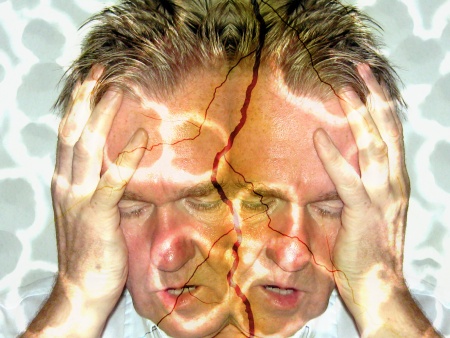
Muchos terapeutas somos conscientes del efecto del Shiatsu sobre el dolor y el malestar general. Este estudio es una muestra de los trabajos realizados en este sentido, muy interesante
A STUDY OF THE EFFECTS OF SHIATSU ON PAIN MANAGEMENT
AT THE PAIN MANAGEMENT CLINIC OF THE UNIVERSITY ARETAIEION HOSPITAL ATHENS GREECE
(MARCH 2008 THROUGH OCTOBER 2011)
By Maria Gryllaki, founding member and current Treasurer of the Hellenic Shiatsu Society.1)
Our team included my two shiatsu practitioner colleagues: Marianna Lazana, founding member and current President of the Hellenic Shiatsu Society (HSS); and HSS member Anna Vazirgiatziki, in conjunction with and supervised by three chief anesthesiologists, Erfili Argyra, Athina Vadalouka and Ionna Siafaka, who also teach at the University of Athens Medical School.2)
Of the 68 patients ranging in age from 30-85 presented by the doctors (and us) to receive shiatsu, I saw 25 (about 300 sessions), Marianna saw 38 (about 240 sessions), and Anna saw 13 patients (about 257 sessions), for a grand total of 797 sessions, with each patient receiving approximately 12 sessions. Psychotherapy, acupuncture and reflexology are also integrated at the pain clinic but were not measured in this study.
All the outpatients we saw were suffering from chronic, nonmalignant-related pain in four major categories. About 80% were on medications for:
- Myoskeletal problems (fibromyalgia, athletic injuries, deformities, osteoporosis, etc).
- Auto-immune diseases (Multiple Sclerosis, Rheumatoid Arthritis, etc).
- Neurological diseases (Migraines, post-herpes neuralgia, trigeminal neuralgia, etc).
- Complex Regional Pain Syndrome (CRPS).
Patients expressed their appreciation for the advice they received from us about regular exercise (breathing, – walking, yoga, stretching, etc.), and nutrition. Relief from secondary problems (intestinal disorders, stress, hormonal imbalances, allergies, and insomnia) was related mainly to shiatsu. Therefore our holistic approach went beyond merely addressing the origin of their chronic pain. Our interaction with the patients was aimed at enhancing their understanding of the nature/etiology of their pain. It helped their self-confidence to realize they had some measure of control over ways in which they could mitigate pain. Additional complications compounding their pain included psychosocial issues like addictions, family problems, financial stress, and mental stress.
Assessment Parameters
Improvement in:
- Level, frequency, duration of pain
- Quality of life (stress levels, parallel complaints/ illnesses, functioning, mood)
- Satisfaction
Outcome
Almost every patient expressed feelings of relaxation and relief. All commented on the unique experience of being treated as an individual with a particular health issue, and not just as an impersonal “medical statistic.
Specifics
- Myoskeletal syndromes: 61% (of 36 patients) = 21-90% improvement
- Neurological syndromes: 67% (of 9 patients) = 21-90% improvement
- Complex patients (Myoskeletal syndromes-Neurological syndromes-parallel diseases and complexities in life): 44% (of 23 patients) = 21-90% improvement
Details
- Myoskeletal syndromes:36 patients
– 2 patients (6%) = temporary improvement
– 12 patients (33%) = 5% – 20% improvement
– 22 patients (61%) = 21% – 90% improvement - Neurological syndromes: 9 patients
– 2 patients (22%) = temporary improvement
– 1 patients (11%) = 5% – 20% improvement
– 6 patients (67%) = 21 – 90% improvement - Complex patients 23
– 8 patients (34%) = temporary improvement
– 5 patients (22%) = 5% – 20% improvement
– 10 patients (44%) = 21% – 90% improvement
60% (of 68 patients) = 40%-50% quality of life improvement
Conclusions
Shiatsu has a considerable and important effect on pain of any etiology/cause, and more specifically:
Age was not a definitive parameter to the pain improvement. Patients of 40 years old and 60 years old experienced improvements equally.
However, age was a factor in compliance issues! Younger patients were more positive and optimistic about dealing with their health issues. Older patients tended to be more pessimistic and linked their health problems to their limited prospects in life. They tended to get disappointed and to give up more easily.
PTSD, grief, and psychological factors played a frequent role in their pain profiles.
Compliant patients experienced faster and better long term results.
Final Observations
Shiatsu offered pain relief and improved the quality of life of those involved in the study. Patients praised the feeling of support from us after their doctors had run out of many other options in pain management. And finally, according to the personnel of the Pain Management department of the Athens Aretaieion Hospital, shiatsu has enhanced the status of onsite services there.
deutsche Zusammenfassung
_____________________________________
[1] Maria and her colleagues presented the details of this study at the 12th National Congress of Regional Anesthesia, Pain Treatment and Palliative Care held at Elounda, Crete on October 13-16, 2011.
[2] Shiatsu therapists in this study volunteered their time. Patients showed their gratitude by bringing bottles of homemade olive oil and cakes and pies.
Sources: A Study of the Effects of Shiatsu on Pain Management. In: AOBTA-Pulse Winter 2011
picture: Gerd Altmann (www.pixelio.de)